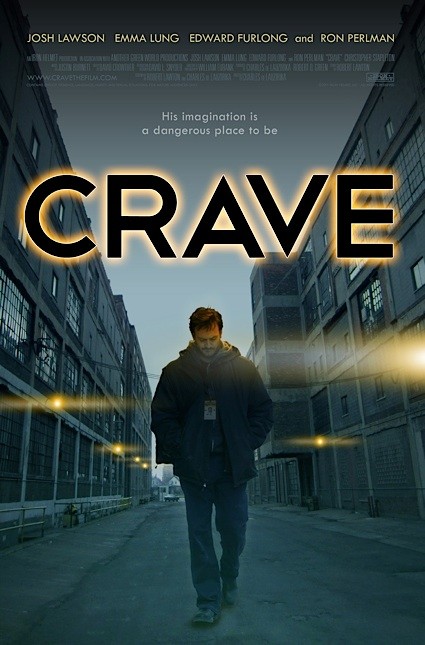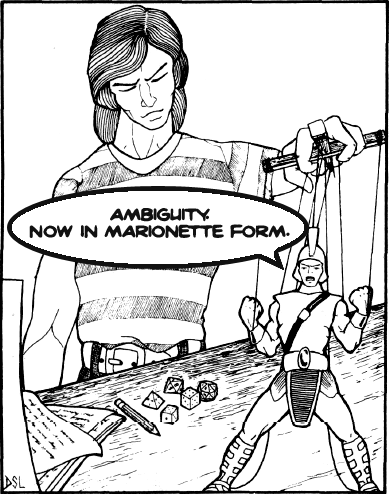Toronto After Dark is here, and once again I find myself skulking in the spider haunted shadows of the Bloor Cinema, madly scribbling down profane ideas birthed by the weird and wonderful sights revealed on the silver screen…
Toronto After Dark is a horror and genre film festival oozing with gobs of monster and rpg inspiration (if you’re in the GTA Oct. 18-26 be sure to check it out). Many of the films the festival showcases won’t see wide release – so in addition to extracting some rpg goodness from each movie, I’ll also give them a bit of a critique, so fellow gamers can know what they need to track down and what to avoid. I’ll try and keep spoilers to an absolute minimum.
Roleplaying games helped foster an unhealthy love of monsters which hooked me at an early age to genre films, that in turn help to inform my tabletop games (in a weird kind of feedback loop). This ongoing series of articles takes these influences and mashes them together to create a strange hybrid I call It Came from the DVR (although I seem to be in the theatre more often than in front of the television, but I’m not complaining – they have better snacks).
 Crave
Crave
In the grimy streets of Detroit, freelance crime photographer Aiden listens to his police scanner and tries to eke out a living documenting the aftermath of the city’s most violent crimes. To escape the bleak realities of his life, Aiden retreats within his own head, filling the time with elaborate revenge and power fantasies. After a chance fling with the beautiful Virginia, and a firsthand brush with crime, the barrier between Aiden’s fantasy and real lives begins to crumble.
Dark Crime Drama Takes You through the Looking Glass
Crave is the kind of film that could have flown under my radar with its understated trailer, and I’m glad it didn’t. The film has already won awards at both Fantastic Fest and Fantasia, and I hope it wins more. Crave has the potential to attract a wider audience than most genre films and, in my view, it deserves this attention.
Writer/director Charles de Lauzirika clearly infuses Aiden with a healthy dose of Travis Bickle DNA (even going so far as to have him practice comebacks in front of a mirror), but there’s more going on here than a simple tribute to Taxi Driver. There’s a black humor in Crave that sucks the audience in, convincing you to go willingly on Aiden’s journey before realizing it’s too late to turn back when things start to get crazy. The best way I can describe the relationship between these two films is to use analogy: Crave is to Taxi Driver as Brazil is to 1984 (clear as crystal, right?).
One of the things that makes this humor work so well is how easy it is to identify with Aiden. Who hasn’t used fantasy to escape the powerlessness of everyday life (given that this is an rpg blog, I’m guessing that most people reading this will agree)? The casting of comedian Josh Lawson was an excellent choice, as he brings a kind of sarcastic and awkward charm to the character that makes him instantly likeable, even when his fantasies are of the bloody variety (later in the film it’s another story, but by then it’s too late – de Lauzirika has you).
Ron Perlman also gives a standout performance as Aiden’s only friend Pete. It’s a very different role from the big bombastic characters he is usually cast as. As much as a fan as I am of Perlman’s, his subtle take on the worn down police detective was refreshing and reminded me how great an actor he is (as opposed to just being awesome).
De Lauzirika does a great job distinguishing between the violence of fantasy and real life. He contrasts the gloriously bloody, over the top action of Aiden’s mindscape with the unceremonious and bland crimes of the mundane world, giving the latter a tragic hollowness. Set against the almost post-apocalyptic backdrop of Detroit it reinforces our desire, like Aiden, to escape into fantasies of our own.
Finally, I have to commend de Lauzirika on the use of ambiguity in the film. Flipping between the real and the imagined, the viewer is often left to decide what is what on his or her own. Now, I used to be a big fan of ambiguity like this, but I’ve been burned so many times by bad storytelling (yes that’s right J.J. Abrams. I’m talking about Lost). Crave defies this trend and does ambiguity right, neither as a cop-out nor a cheat, giving the audience the tools it needs to decide what is real when Aiden cannot.
Crave is highly recommended for fans of crime thrillers and dark comedy. Keep an eye on this one; it’s got the potential to be the next word of mouth independent hit.
RPG Goodness
Crave plays with viewer perception and the boundary between fantasy and reality, subject matter that most rpg players should be intimately familiar with. The way Crave handles that boundary, by embracing ambiguity, is a lesson gamemasters can use at the table. There has always been a struggle in D&D to differentiate between player knowledge and character knowledge, particularly when it comes to things like saving throws, illusions, and the use of ‘meta’ information in game. Instead of ineffectually trying to crack down on meta-gaming (although I do discourage it), I’ve found a few techniques that, like the film, embrace the ambiguity of the boundary between player and character:
 Dice: When players hear the roll of the dice from behind the DM screen, it is a hard to resist cue that something is about to happen in the game. Players won’t necessarily start taking defensive positions, but they will be a little more wary as the game proceeds. One method I used to use was to just pick up and roll a bunch of dice at random times to subvert this expectation. What I have found that works even better though, is to choose specific times when you want to increase the tension and roll a die then. Instead of subverting the meta reaction it channels it, and can be useful in subtly setting the mood.
Dice: When players hear the roll of the dice from behind the DM screen, it is a hard to resist cue that something is about to happen in the game. Players won’t necessarily start taking defensive positions, but they will be a little more wary as the game proceeds. One method I used to use was to just pick up and roll a bunch of dice at random times to subvert this expectation. What I have found that works even better though, is to choose specific times when you want to increase the tension and roll a die then. Instead of subverting the meta reaction it channels it, and can be useful in subtly setting the mood.- Mapping: Drawing a map of the dungeon (or sewer, or hedge maze or whatever) is a strange boundary crossing activity, since the characters in the game are considered to be doing it while the players outside of the game do the same. Since, for ease of play, the DM gives the players the exact dimensions of the chambers the characters are exploring, finding secret rooms or uncovering other mysterious dungeon features can become glaringly obvious when looking at the map (“hey look at that perfect room shaped space over there”). Sometimes (not always – that would be annoying) when I want to play with that ambiguity, I’ll purposefully give slightly incorrect information when describing a room (call it ‘the unreliable narrator’). It’s important to give a hidden Perception check for the character doing the mapping to notice the discrepancy – this gives an in-character replacement for uncovering secrets to out-of-character map examination (“wait a second, I only assumed this room was 20 feet long based on the size of the house, its actually only 15 – I think that back wall might hold the corpse of the murdered Countess!”).
- The Battlemat: If you play with a battlemat and miniatures (as I do), there is a strong meta-game assumption that anything you draw on the mat is terrain and anything you use a miniature to represent is a potential threat (or monster). Like rolling the dice behind your screen, you can manipulate this assumption to either lull the players into a false sense of security or increase tension and paranoia. For example, in a recent adventure my players faced off against an animated, undead throne. While its description was kind of gruesome, the players didn’t see it as a threat because I drew it out on the battlemat as a piece of furniture (and it created a great jump scare when it started to walk across the room). Likewise, whenever the party finds the long dead corpses of past adventurers (there seem to be a lot of those in adventures), I like to throw skeleton miniatures onto the mat to show their position. Rather than the players just glossing over the corpses as containers for potential loot, the whole scene suddenly becomes sinister and ominous – are those just dead bodies or are they going to sit up and attack us for disturbing their rest?
Tags: Blather, D&D, Pop Culture, System Neutral